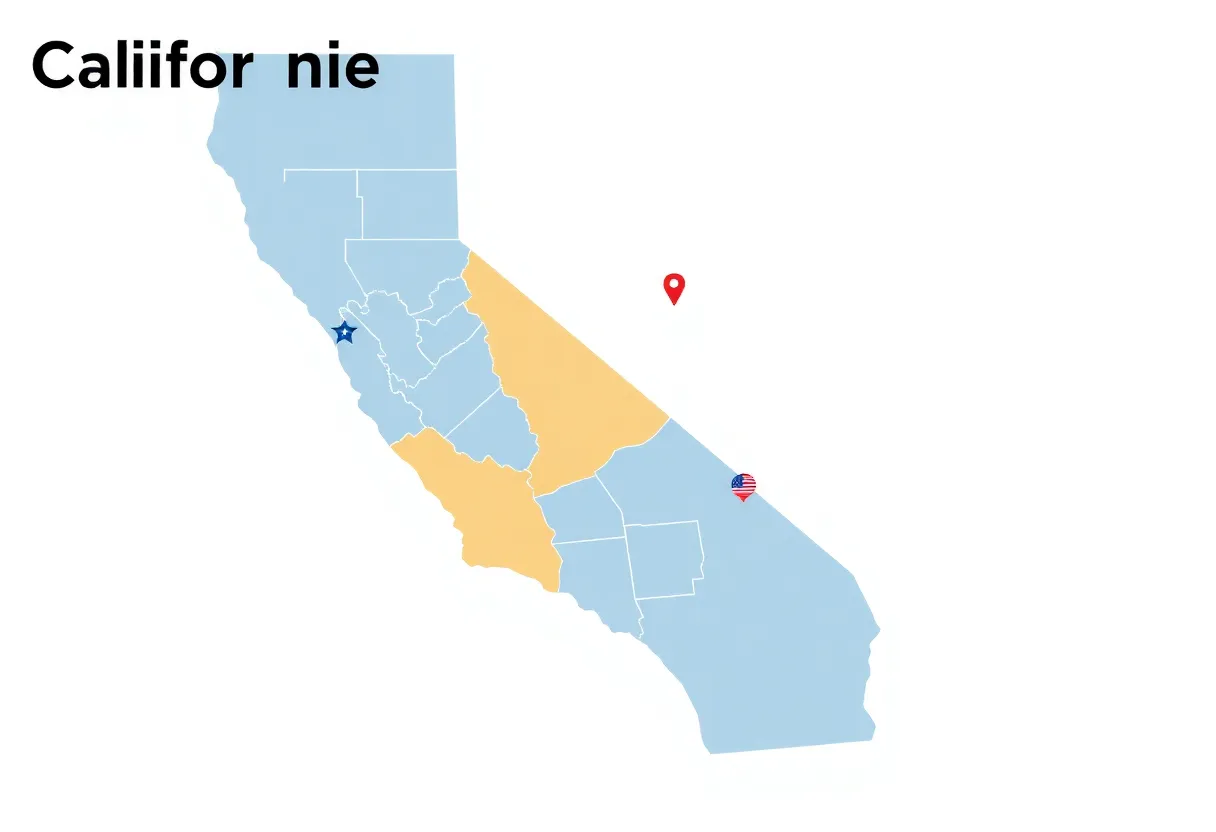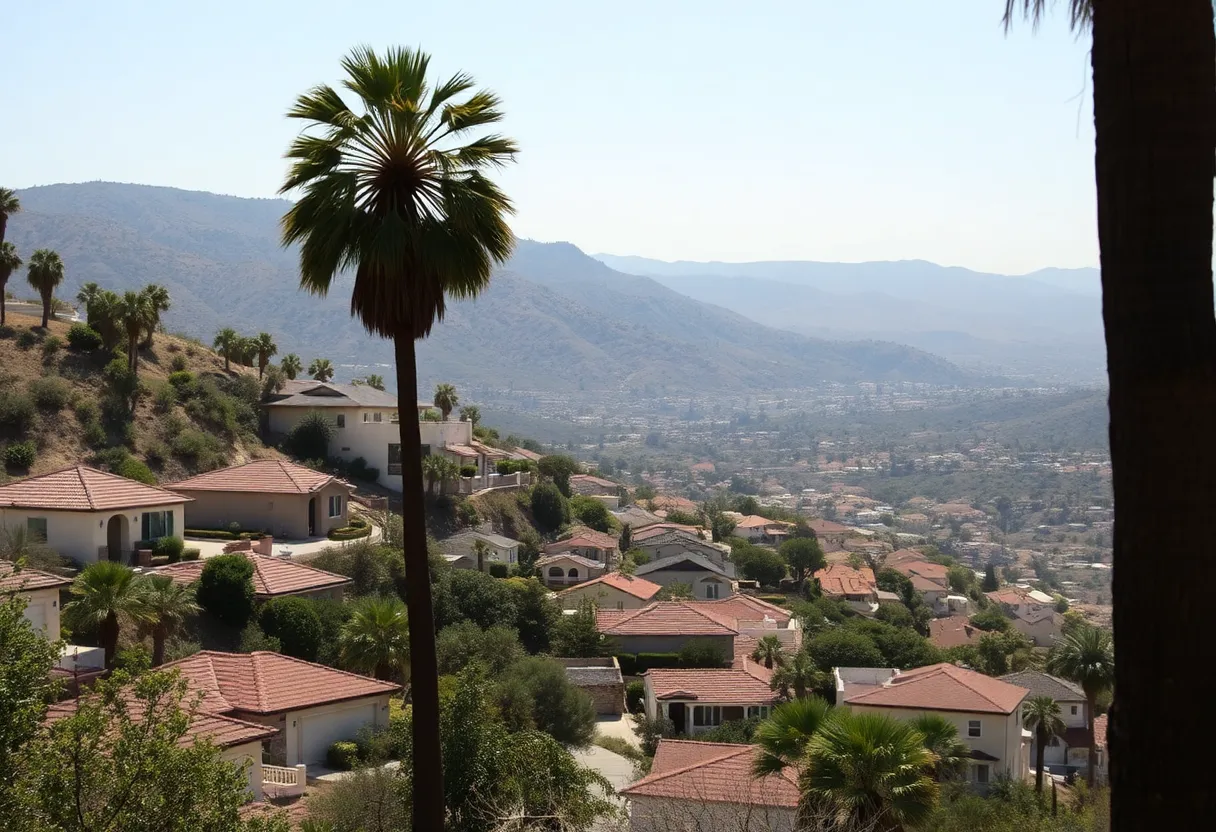California, August 19, 2025
News Summary
California Governor Gavin Newsom has put forth a divisive plan to redraw congressional maps, aimed at increasing Democratic representation by changing Republican-held districts. The proposal seeks to finalize a new electoral map ahead of a special election in November, despite significant public opposition and legal challenges from state Republicans claiming violations of state law. Critics highlight the proposal’s potential to overshadow the independent redistricting process meant to diminish partisan influence.
California Governor Gavin Newsom Proposes Controversial Redistricting Plan Amid GOP Opposition
California Governor Gavin Newsom has proposed a contentious plan to redraw the state’s congressional maps, backed by local Democratic leaders. The aim is to have a special election in November to finalize this redistricting initiative, which seeks to reshape the political landscape of California significantly.
The proposal intends to eliminate more than half of the districts currently held by the Republican Party, thereby allowing Democrats the opportunity to gain an additional five seats in Congress. Currently, California has 43 Democratic representatives and 9 Republicans in its congressional delegation. Newsom’s plan must pass through a series of fundraisers aimed at securing support from wealthy donors, as it promotes the initiative to voters.
Newsom frames this redistricting effort as a defense of democracy in light of similar Republican measures undertaken in states like Texas. However, despite California’s strong Democratic lean, doubts persist regarding the success of the proposed plan among voters.
Key District Changes
Several Republican incumbents could see their districts changed drastically under Newsom’s redistricting plan:
- Rep. Doug LaMalfa: Currently has a +17 Republican advantage, but it may swing to a +10 Democratic advantage.
- Rep. Kevin Kiley: His district could flip from a +6 Republican advantage to a +8 Democratic edge.
- Rep. David Valadao: Currently slightly favored with a Democratic advantage may face a six-point Democratic increase.
- Rep. Ken Calvert: This district would lose its Republican voter registration edge, switching to a +20 Democratic advantage.
- Rep. Darrell Issa: Potentially facing a shift to a +4 Democratic advantage as his area absorbs portions of a strongly Democratic region.
Legal and Political Challenges
A lawsuit has been filed by California Republicans, claiming that the redistricting process violates the state constitution’s requirement for a 30-day review period for new legislation. They argue that the current plan circumvents voters’ rights to engage comprehensively in the legislative process.
Democrats are pushing to complete the redistricting plan swiftly to have it ready as a ballot measure for the November 4 special election. The California independent redistricting commission, intended to remove political influences in map drawing, faces criticism for potentially being bypassed by this legislative effort.
Public Sentiment and Implications
Recent polling indicates that approximately 64% of Californians oppose Newsom’s redistricting plan, favoring the existing independent commission system instead. Some voices, including former Governor Arnold Schwarzenegger, have decried the quick pace and nature of the proposed changes, calling for the preservation of independent redistricting.
Additionally, the success of the redistricting initiative may have implications for Newsom’s political aspirations, particularly concerning a potential presidential run in 2028. California Republicans view the plan largely as a power grab, complicating the already contentious topic of redistricting in American politics.
Conclusion
The proposed redistricting plan by Governor Gavin Newsom aims to reshape California’s congressional landscape and could significantly impact the state’s political power dynamics. With substantial public opposition and legal challenges from Republicans, the outcome remains uncertain as the November special election approaches.
FAQ
What is the purpose of Governor Newsom’s redistricting proposal?
The proposal aims to redraw California’s congressional maps, reducing the number of GOP-held districts and enabling Democrats to potentially gain additional seats in Congress.
What are the major changes proposed in Republican-held districts?
The plan includes significant shifts in key Republican districts, potentially changing advantages from Republicans to Democrats, with several districts aiming to gain from existing Republican strengths.
How have voters responded to the redistricting plan?
Around 64% of Californians oppose the plan, showing a preference for maintaining the independent redistricting commission that was designed to limit political influences.
What legal challenges does Newsom’s proposal face?
California Republicans have filed a lawsuit arguing that the redistricting process violates the state constitution’s 30-day review requirement for new legislation.
Key Features of Newsom’s Redistricting Plan
| Aspect | Details |
|---|---|
| Current Democratic Representation | 43 seats |
| Current Republican Representation | 9 seats |
| Potential District Changes | More than half of GOP-held districts could be altered |
| Public Opposition | 64% of Californians oppose the plan |
| Legal Action | Lawsuit filed by California Republicans |
Deeper Dive: News & Info About This Topic
- Fox News: GOP House Could Be Wiped Out by Newsom’s Redistricting Plan
- Wikipedia: Redistricting in the United States
- The Hill: California Supreme Court Redistricting
- Google Search: California Redistricting 2025
- ABC7: Congresswoman Young Kim Slams Newsom’s Redistricting Plan
- Encyclopedia Britannica: Redistricting
- San Francisco Chronicle: California Redistricting
- Google News: California Governor Gavin Newsom Redistricting Plan

Author: STAFF HERE BEVERLY HILLS WRITER
The Beverly Hills Staff Writer represents the experienced team at HEREBeverlyHills.com, your go-to source for actionable local news and information in Beverly Hills, Los Angeles County, and beyond. Specializing in "news you can use," we cover essential topics like product reviews for personal and business needs, local business directories, politics, real estate trends, neighborhood insights, and state news affecting the area—with deep expertise drawn from years of dedicated reporting and strong community input, including local press releases and business updates. We deliver top reporting on high-value events such as the Rodeo Drive Concours d'Elegance, the Beverly Hills artSHOW, Concerts on Canon, and holiday celebrations throughout the city. Our coverage extends to key organizations like the Beverly Hills Chamber of Commerce and Visit Beverly Hills, plus leading businesses in luxury fashion, hospitality, and entertainment that drive the local economy. As part of the broader HERE network, including HERELosAngeles.com, HERESantaAna.com, HEREHuntingtonBeach.com, and HERECostaMesa.com, we provide comprehensive, credible insights into Southern California's dynamic landscape.





